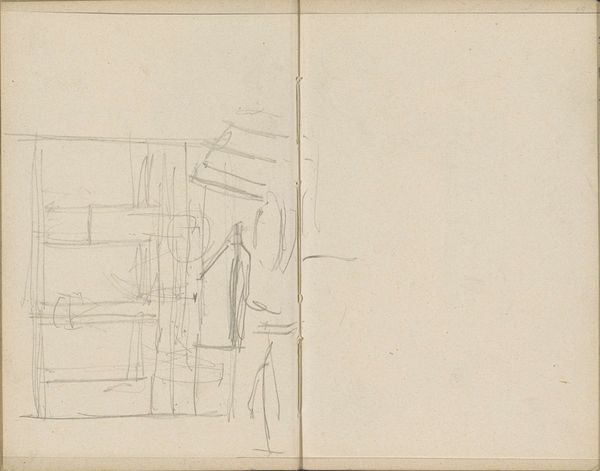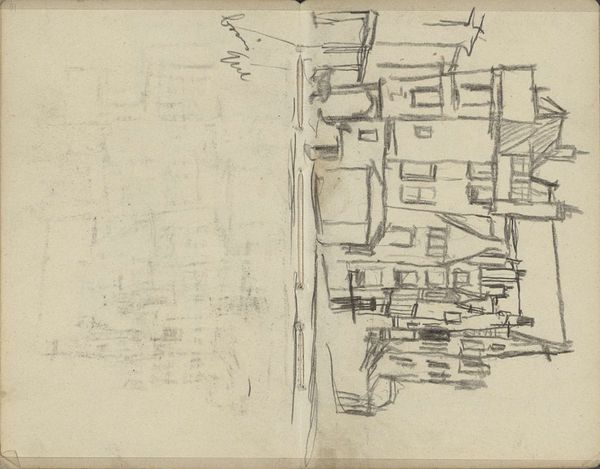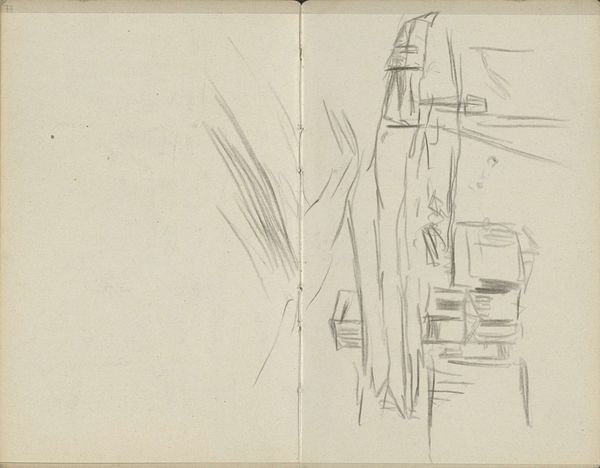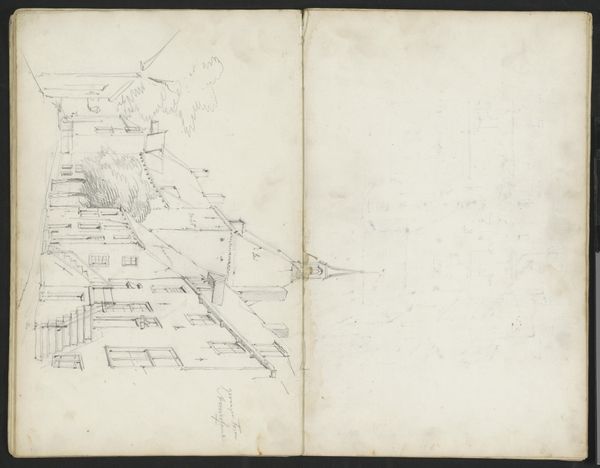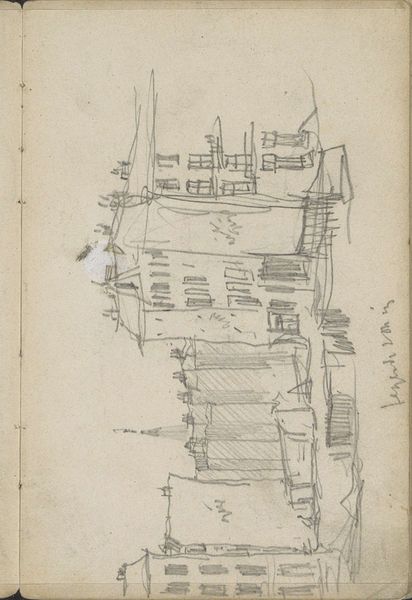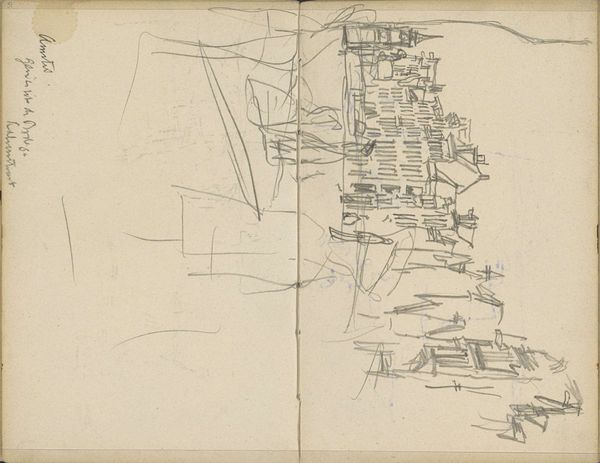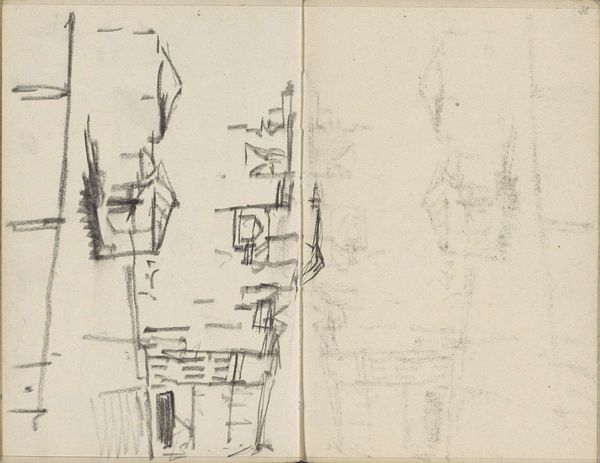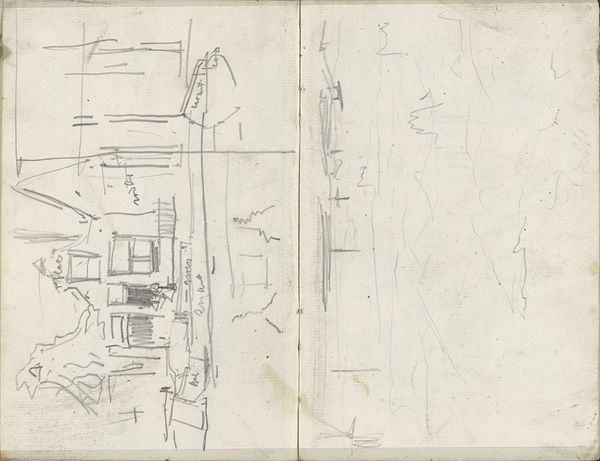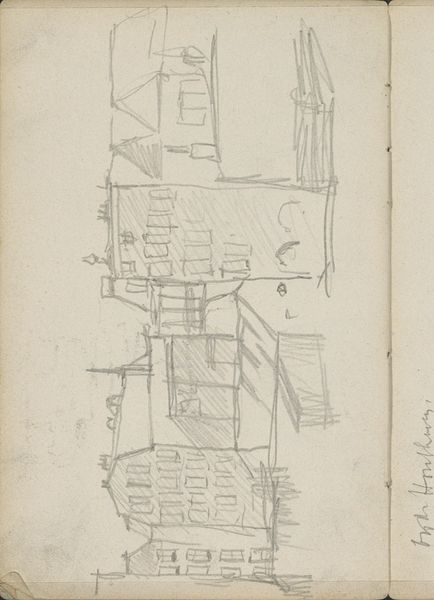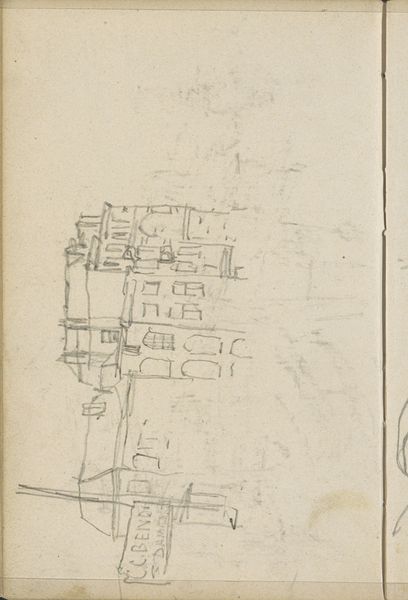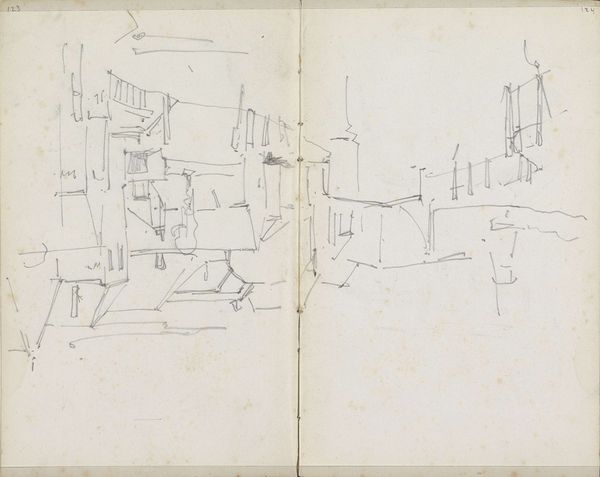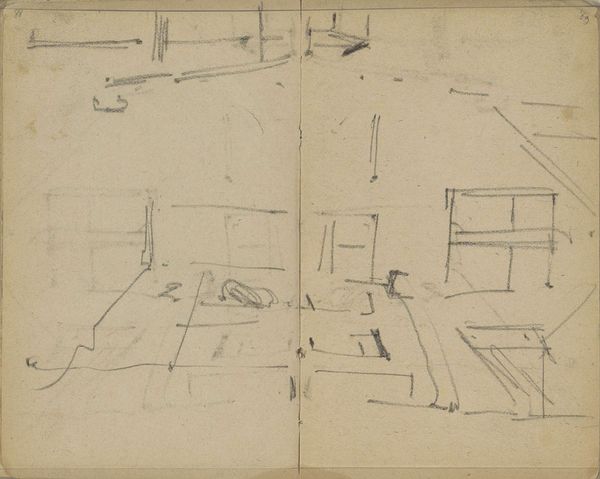
Gezicht op de huizen aan de Vijgendam en de Beursstraat (Rokin) te Amsterdam c. 1902
0:00
0:00
georgehendrikbreitner
Rijksmuseum
Copyright: Rijks Museum: Open Domain
Editor: So, this is George Hendrik Breitner's "View of the Houses on the Vijgendam and Beursstraat (Rokin) in Amsterdam," made around 1902. It's a pencil drawing on paper. I'm struck by its casualness, like a snapshot capturing a moment in time. What do you see in this piece? Curator: Beyond its immediate aesthetic appeal as an Impressionistic cityscape, I see a powerful document of urban life at the turn of the century. Breitner was known for capturing the gritty reality of Amsterdam, and this sketch offers a glimpse into the city's transformation amid industrialization. Notice the stark contrast between the imposing architecture and the everyday life implied by the fleeting sketch. How do you think Breitner's choice to sketch, rather than create a formal painting, reflects his view of the city? Editor: That’s a great point! Perhaps the sketch format is meant to highlight the fleeting nature of modern urban experience. I guess that elevates the importance of the moment. The fleeting quality also reinforces a sense of democratization, documenting experiences for everyone, rather than staged historical or mythological settings. Curator: Exactly! And let's consider the location. The Rokin was a bustling hub of commerce and social activity. Breitner is not just depicting buildings, but he's implicitly commenting on capitalism, class, and the changing social landscape of Amsterdam. Do you see anything in the composition that strengthens this idea? Editor: Maybe the way the buildings seem to loom over the street, like they're imposing themselves onto the lives of ordinary people. It kind of gives off this feeling of capital's omnipresence, like we always have to answer to someone. Curator: Precisely! It is this constant presence in daily life. This interpretation reveals how Breitner's work transcends a mere cityscape. It's an activist stance, questioning power dynamics and social structures. Thinking about that changes your reading of it, right? Editor: Definitely! It’s more than just a pretty picture; it's a social commentary. Thanks for helping me understand it! Curator: It's a collaborative process. Considering the artwork’s cultural contexts, particularly the rise of industrialization and concurrent shifts in economic paradigms, brings fresh life to our reading of an artwork.
Comments
No comments
Be the first to comment and join the conversation on the ultimate creative platform.
